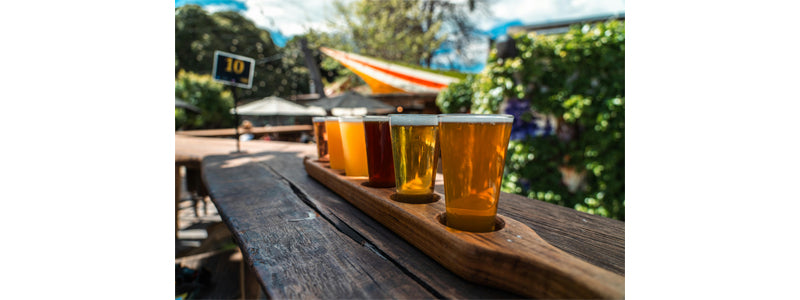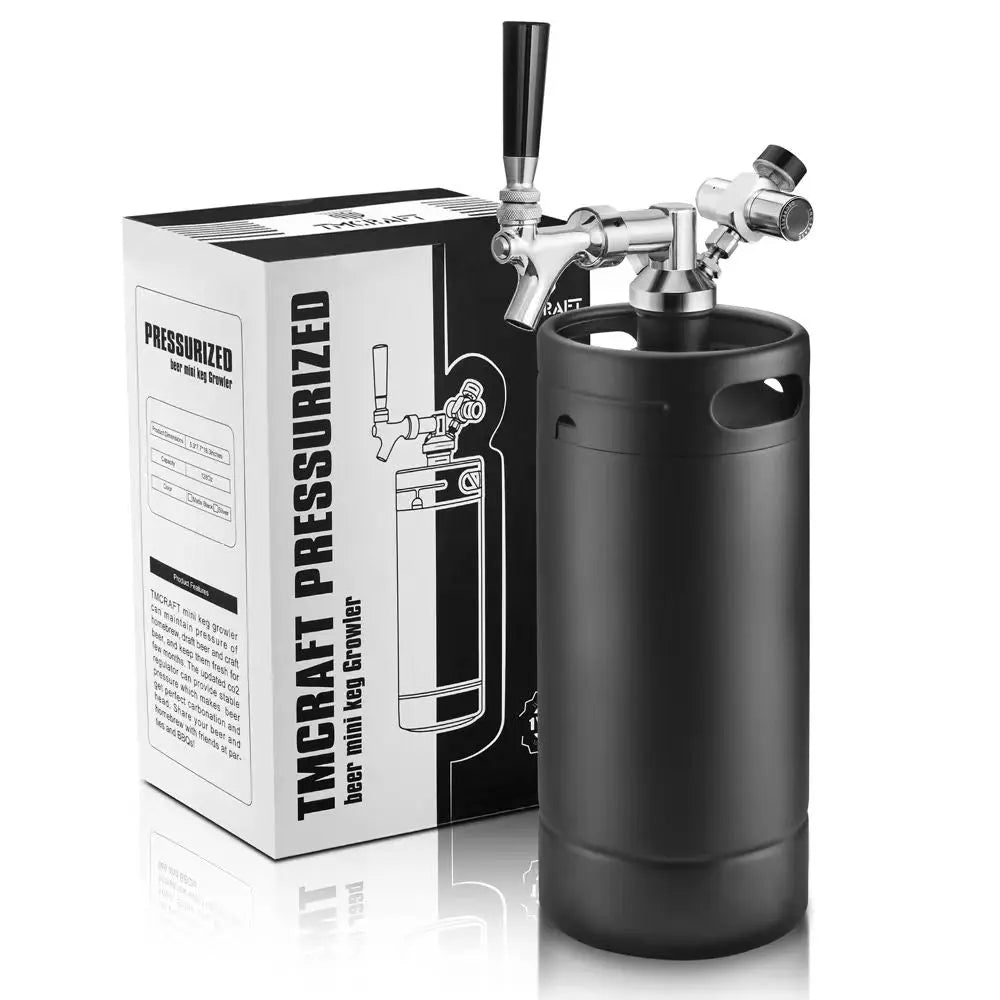
How Long to Carbonate Beer at 30 PSI: A Comprehensive Guide
When it comes to carbonating beer, one of the most important factors to consider is the pressure you use and the time it takes for the beer to absorb enough carbon dioxide (CO2). The higher the pressure, the faster the carbonation process can be, but there are some variables to keep in mind. For example, if you're carbonating at 30 PSI, how long does it take for the CO2 to fully carbonate the beer?
In this blog, we'll walk you through the process of carbonating beer at 30 PSI, explain how long you should expect it to take, and provide some useful tips to help you get the best carbonation results for your homebrew.
What is PSI and How Does It Affect Carbonation?
PSI stands for pounds per square inch, and it's a measure of the pressure being applied to your beer during the carbonation process. The higher the PSI, the faster CO2 can dissolve into the beer, which helps carbonate it more quickly. However, carbonation is a delicate process, and while high PSI speeds it up, it also increases the chances of over-carbonating or under-carbonating your beer if not carefully managed.
The level of carbonation in beer is generally measured in volumes of CO2 (how much gas is dissolved in the liquid). Standard carbonation for most styles of beer is around 2.2 to 2.5 volumes of CO2, though some beers (like stouts or Belgian ales) may have more, and lighter beers (like lagers) may have less.
For most homebrewers using a kegging system, 30 PSI is a common starting point for quick carbonation, especially when you want to speed up the process.
How Long Does It Take to Carbonate Beer at 30 PSI?
The short answer is that it can take anywhere from 24 to 72 hours to carbonate beer at 30 PSI, depending on various factors such as the temperature of the beer, the amount of beer you’re carbonating, and whether you're using a forced carbonation or a natural carbonation method.
Here's a more detailed breakdown:
1. Forced Carbonation Method
Forced carbonation is the process of pressurizing the keg with CO2 to directly infuse the gas into the beer. This method can carbonate beer much faster than bottle conditioning or natural carbonation. Here’s how the process works:
- Set the Pressure to 30 PSI: After transferring your beer to a keg, connect the CO2 tank to the keg and set the pressure to 30 PSI.
- Shake or Agitate the Keg: This is an optional step but can help speed up the carbonation process. Gently shake the keg for about 5-10 minutes. The more you agitate the keg, the faster the CO2 will dissolve into the beer. Be careful not to shake too hard or too long, as this could result in over-carbonation.
- Wait for the CO2 to Dissolve: After shaking, you should leave the keg under pressure for anywhere between 24 and 48 hours. At 30 PSI, the beer will absorb CO2 quickly, but the time will depend on the beer style and temperature.
- Check the Carbonation: After 24 hours, check the carbonation by pulling a sample from the keg. If the beer isn't carbonated enough, you can continue the process for another 24-48 hours, checking periodically.
2. Temperature Matters
The temperature of your beer plays a crucial role in how quickly CO2 will dissolve into the liquid. Colder beer carbonates faster than warmer beer because CO2 is more soluble in cold liquids. The ideal temperature for carbonating beer is around 38°F to 45°F (3-7°C), which is typically the range most homebrewers store their kegs at.
- At 30 PSI and 38°F (3°C): Beer will carbonate more quickly than if it were stored at room temperature.
- At 30 PSI and 60°F (15°C): The process will take longer, and you might need to increase the pressure to compensate for the warmer temperature.
3. Rapid Carbonation vs. Slow Carbonation
While you can achieve carbonation in just 24 hours with forced carbonation at 30 PSI, it’s important to note that some brewers prefer to carbonate more slowly for more even and consistent results. By using a lower PSI (e.g., 12-15 PSI) and letting the beer carbonate over 3-5 days, you reduce the risk of over-carbonating or introducing too much foam.
Rapid carbonation at 30 PSI can sometimes lead to excess carbonation, which might result in too much foam when serving your beer. While shaking can speed up the process, it’s important to manage it carefully.
How to Prevent Over-Carbonating at 30 PSI
When carbonating beer at 30 PSI, there's a risk of over-carbonating, especially if you shake the keg too aggressively or leave it under high pressure for too long. Here's how to avoid this:
- Don’t Shake Too Hard: Gently rock or shake the keg. Shaking too aggressively can cause CO2 to dissolve too quickly and lead to over-carbonation.
- Monitor the Time: While 24-48 hours is typical for carbonation at 30 PSI, it’s a good idea to check the carbonation level after the first 24 hours. If it’s already fully carbonated, you can reduce the pressure or release some CO2.
- Release Excess CO2: If you find that your beer has been over-carbonated (leading to too much foam), you can release some of the pressure from the keg. To do this, pull the pressure relief valve on the keg for a few seconds to release some CO2 and reduce the carbonation.
Tips for Carbonating Beer at 30 PSI
- Start Low and Go Slow: If you’re new to kegging and forced carbonation, it’s always best to start at a lower PSI (around 20-25 PSI) and gradually increase it to 30 PSI if needed. This reduces the risk of over-carbonating.
- Use a CO2 Regulator: A good-quality CO2 regulator ensures that you can maintain consistent pressure while carbonating. It’s also vital to avoid sudden spikes or drops in pressure that can cause uneven carbonation.
- Proper Temperature: Store your beer at a cool temperature between 38°F to 45°F to allow the CO2 to dissolve properly and speed up the carbonation process.
- Be Patient: While it can be tempting to speed things up with shaking, sometimes patience is key. If you want to avoid excess foam or under-carbonation, consider letting the keg carbonate naturally at a lower PSI for 3-5 days.
Conclusion
Carbonating beer at 30 PSI is a quick and effective way to achieve the right level of carbonation for your homebrew. While it typically takes 24-48 hours at 30 PSI, the time required can depend on factors like temperature, beer style, and how much you agitate the keg. By controlling the pressure and shaking gently, you can achieve consistent and smooth carbonation without the risk of over-carbonating.
Whether you’re carbonating your homebrew for the first time or experimenting with rapid carbonation, always remember that carbonation is a balance between pressure, temperature, and time. Monitor your beer, check carbonation levels, and enjoy the fresh, bubbly results of your hard work!
Happy brewing, and cheers to perfectly carbonated beer!

